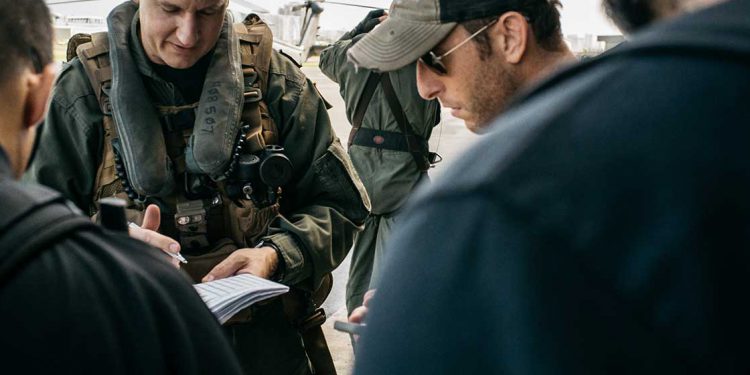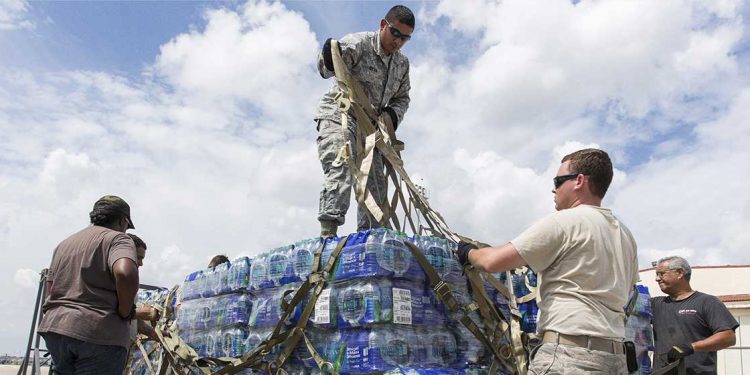goTenna

Off-Grid Operator Series: Beyond the Edge Institute prepares for emergency rescues
Going off the grid takes a combination of courage, planning, and training. Even in the best of situations with the most prepared teams, things can often go from adventure to danger. Fortunately, there are organizations that are prepared to respond to crises in the last mile at a moment’s notice.

Tech Spotlight Series: Veterans improve disaster readiness and make a better “bad day” for communities
Fix it in post! That’s often heard in the film industry. But industry professionals know that any work done after the fact is far more expensive than good planning and preparedness. When it comes to disaster readiness, professionals likely know the same is true. Well-informed training, solid planning with local

Top 5 takeaways from Craig Fugate’s keynote address at IWCE 2020
Last week’s IWCE 2020 conference featured 48 breakout sessions on everything from broadband to deployable networks, and even featured keynote speakers such as former FEMA Administrator Craig Fugate. In his keynote address, Fugate addressed hundreds of virtual attendees on an often overlooked area of critical communications — interoperability with disaster

Video | IWCE Virtual 2020: Craig Fugate Keynote Address
The IWCE 2020 conference featured 48 breakout sessions on everything from broadband to deployable networks, and even featured keynote speakers such as former FEMA Administrator Craig Fugate. In his keynote address, Fugate addressed hundreds of virtual attendees on an area of critical communications emergency management agencies often overlook: interoperability with

Maintaining situational awareness off the grid a hot topic at IWCE 2020
When disasters damage or destroy terrestrial communications networks, first responders need rapidly deployable equipment to maintain situational awareness and communications. This was one of the central discussions during the 2020 International Wireless Communications Expo (IWCE 2020), a virtual event that brought together critical communications technology providers, practitioners, and other industry

Podcast: Source One MRO discusses delivering essential communications and supplies to the frontlines during COVID-19
Whether it’s the current global COVID pandemic, wildfires, hurricanes, or other crises, national emergencies show us who the heroes are. The Last Mile Podcast recently sat down with two heroes, Source One MRO’s Brad Bihun and Keith Cowell, who are providing solutions to help first responders stay safe within the

How the U.S. military helped develop mobile mesh networking
Mobile mesh networks provide device-to-device connectivity when centralized infrastructure is either unreliable or unavailable. Whether each network “node” is mobile or not, the defining features of mesh networks — decentralized, infrastructure-less, routing over multiple “hops” — have manifested themselves over the last several decades in different forms, for different applications,

Podcast: LCG Holdings on connecting Puerto Rico
The Last Mile Podcast features in-depth interviews with operators on the front lines of remote and austere missions around the world. Rafael Bobe, owner of LCG Holdings in Puerto Rico, knows the value of reliable and resilient communications networks. He was on the ground during Hurricanes Irma and Maria in

Puerto Rico and the unique challenges of emergency response in island communities
It’s almost impossible to deny the fact that “100-year storms” are happening almost every disaster season. And now in the midst of an unprecedented pandemic, emergency management agencies are all too accustomed to preparing for the worst. But emergency response isn’t the same everywhere. Emergency situations in some geographies and

Can mesh-enabled smartphones solve disaster response communications challenges in the COVID-19 era?
Former Federal Emergency Management Agency Administrator Craig Fugate recently published a whitepaper on disaster response communications in the COVID-19 era. During his career at FEMA, Fugate heralded the use of mobile technology and social media as more and more communities — and their first responders — relied on wireless cellular



